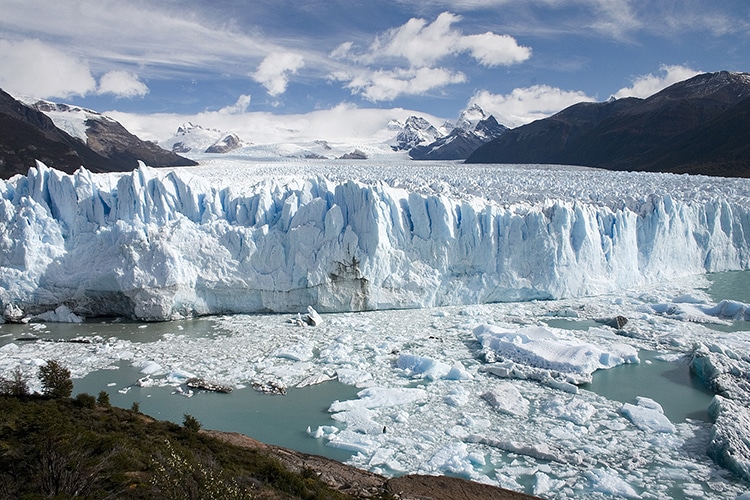
Professor Douglas Wiens installs a seismic monitoring device near the iconic mountains of Torres del Paine, Chile. (Photo: Weins/Washington University)
It’s no secret that the world’s glaciers are changing—fast. These important climate regulators are vanishing from mountain peaks and collapsing into en masse into the sea. There is no sugarcoating this crisis, but there is an interesting dynamic at play in Patagonia—a remote and beautiful corner of South America. As the glaciers in Patagonia retreat, the land beneath them is actually rising in a process known as glacial adjustment. This time, however, the adjustment is much faster than normal says a new study in Geophysical Research Letters.
Glaciers are exceptionally heavy. As they melt, and the water contained runs off, the land formerly beneath the glacier rises. This rebounding or uplift is known as glacial isostatic adjustment. This process is typically a slow one, rising inches over thousands of years. In Chile and Argentina, the extensive ice fields atop the Andes Mountains are “melting at some of the fastest rates on the planet,” according to the study’s researchers. The team of plate tectonic and seismic activity experts was researching uplift in Patagonia when the pandemic hit, which delayed results.
Now, finally announced, the results are surprising. The land is lifting up by about 1.6 inches per year—a shocking rate. The team discovered a gap deep down in a tectonic plate underneath Patagonia. “Above this gap, the ice fields have been shrinking, removing weight that previously caused the continent to flex downward. The scientists found very low seismic velocity within and around the gap, as well as a thinning of the rigid lithosphere overlying the gap,” reads a statement from Washington University in St. Louis, home to the lead researchers. In short, this gap into the hotter mantle material is allowing the Earth to rebound exceptionally fast as the ice above melts.
What does this mean for the global climate? While Patagonia is remote and sparsely inhabited, no place—remote or packed—will be spared rising sea levels from glacier melt. This new discovery will contribute to the ongoing predictions of just how much these levels will rise. “Understanding the evolution of these glaciers helps us understand what glaciers in Greenland and Antarctica may look like in the future in a much warmer climate,” glaciologist Eric Rignot at NASA’s Jet Propulsion Laboratory says . While scientists are ringing all the warning bells they can, everyone can take the time to raise awareness, decrease their energy consumption, and write their representatives to advocate for proactive measures to combat the climate crisis.
Glaciers in Patagonia are melting at a shocking rate, and the land beneath them is rising faster than any recorded glacial adjustment ever.

The Perito Moreno Glacier of Argentina. (Photo: r Luca Galuzzi via Wikimedia Commons, CC BY-SA 2.5)
This worrying seismic effect forebodes rising sea levels as the climate crisis hurtles forward.
h/t: [Science Alert]
Related Articles:
UN Environment Assembly Agrees To Negotiate a Plastic Waste Treaty by 2024
Geothermal Company Plans to Dig Down 12.5 Miles To Harness the Energy of Earth
Turkish Man Plants 30 Million Saplings and Creates Forest on Once-Barren Land
Ecuador Expands the Galápagos Marine Reserve by More Than 23,000 Square Miles
